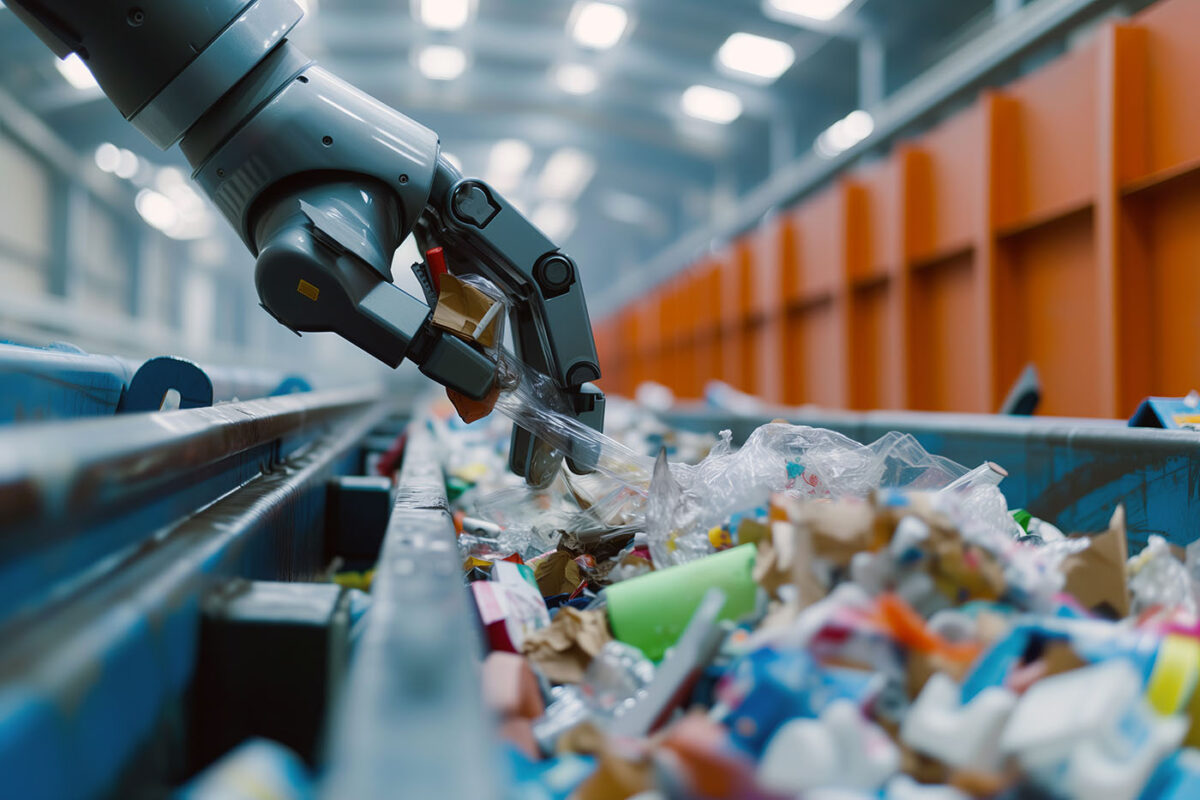Enhancing Plastic Sorting Through Deep Learning

TOMRA’s sorting machines can now accurately distinguish between food-grade and non-food-grade plastics, overcoming a long-standing challenge in the industry.
Automated Sorting Waste
A leader in the sorting solutions industry, TOMRA has been developing and refining sensor-based sorting technologies for over a century. They’ve played a key role in optimizing processes across various sectors, including food processing and recycling. Now, TOMRA’s deep learning technology is poised to revolutionize plastic recycling by accurately separating food-grade and non-food-grade packaging. The challenge of sorting materials such as PET, PP, and HDPE into food grade and non-food grade has long plagued the industry due to the similarities of both types of packaging, making it difficult for current sorting systems to effectively distinguish between them. However, the advent of a machine capable of identifying various materials has resolved this issue. It continuously learns over time and makes real-time decisions for their classification.
You can also read: Flake Sorting: Elevating Plastic Recycling
Deep Learning In Packaging Sorting
Equipped with the GAINnext™ AI-based system, TOMRA machines integrate deep learning technology and optical waste sensors to classify challenging materials. Deep learning, a transformative subfield of AI, mimics the human brain’s structure and functions. Furthermore, deep learning algorithms utilize artificial neural networks with multiple layers that process information dynamically. By processing extensive data sets, these networks learn and enhance their pattern recognition capabilities, even in complex scenarios. Consequently, employing this technology in waste management marks a substantial advancement in circular economy practices, enabling the efficient processing of packaging into food grade and non-food grade materials. Additionally, TOMRA has pioneered waste sorting by combining traditional sensors with deep learning, creating the market’s most accurate solution. Finally, engineers have trained neural networks using images, allowing the machine to identify patterns and properties and classify materials with various sensors
Pure Recycled Plastics Made Possible
TOMRA has achieved purity levels over 95% in packaging applications, opening new revenue opportunities for customers. Additionally, deep learning allows more precise sorting by identifying thousands of objects based on material and shape. Beyond food-grade materials, TOMRA’s technology also provides solutions for deinking paper and enhancing PET bottle purity.
As TOMRA advances its deep learning technology, we expect increased efficiency and accuracy in plastic sorting. This progress supports a more sustainable future and drives the circular economy, creating new revenue opportunities and contributing to a cleaner planet.
